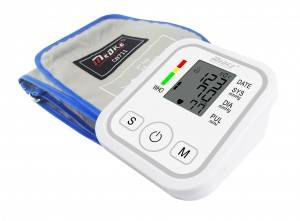Regular blood pressure measurement in hypertensive patients is very necessary, which is helpful for timely understanding of their blood pressure, evaluating drug efficacy, and rationally adjusting drug regimens. However, in actual measurement, many patients have some misunderstandings.
Mistake 1:
All cuff lengths are the same. A small cuff size will result in high blood pressure readings, while a large cuff will underestimate blood pressure. It is recommended that people with normal arm circumference use standard cuffs (airbag length 22-26 cm, width 12 cm); those with arm circumference > 32 cm or < 26 cm, choose large and small cuffs respectively. Both ends of the cuff should be tight and tight, so that it can accommodate 1 to 2 fingers.

Mistake 2:
The body is not “warmed up” when it is cold. In winter, the temperature is low and there are many clothes. When people just take off their clothes or are stimulated by cold, their blood pressure will rise immediately. Therefore, it is best to wait 5 to 10 minutes before measuring blood pressure after undressing, and to ensure that the measurement environment is warm and comfortable. If the clothes are very thin (thickness < 1 mm, such as thin shirts), you don’t need to take off the tops; if the clothes are too thick, it will cause cushioning when pressurized and inflated, resulting in high measurement results; Due to the tourniquet effect, the measurement result will be low.
Mistake 3:
hold back, talk. Holding urine can cause blood pressure readings to be 10 to 15 mm Hg higher: phone calls and talking to others can raise blood pressure readings by about 10 mm Hg. Therefore, it is best to go to the toilet, empty the bladder, and keep quiet during the blood pressure measurement.
Misunderstanding 4: Sitting lazily. Improper sitting posture and lack of back or lower extremity support can cause blood pressure readings to be 6-10 mmHg higher; arms hanging in the air can cause blood pressure readings to be about 10 mmHg higher; legs crossed can cause blood pressure readings to be 2-8 mmHg higher column. It is recommended that when measuring, back against the back of the chair, with your feet flat on the floor or footstool, do not cross your legs or cross your legs, and place your arms flat on the table for support to avoid muscle contractions and isometric exercise affecting blood pressure.
Post time: Apr-20-2022

